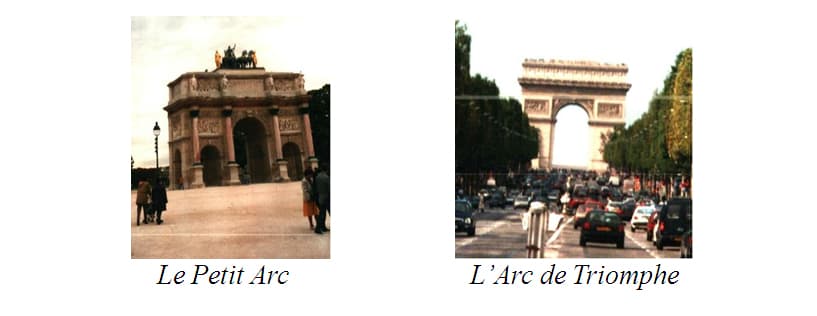Introduction and Rationale
The French language and culture often seem quite removed from the lives of my students. Whereas they see and hear evidence of the "point" of learning Spanish literally daily, it is often more difficult to convince them of the practical benefits of learning French. Although there are indeed plenty, perhaps the key is to finally drop the pretense that the competition is comparable in terms of present day, everyday relevance, and instead set our sights on the future, full as it is of possibility. Paris is the City of Lights! It's a city that begs to be dreamt of, that resonates with mystique and allure. So let's use that! Let's compel the adventurous nature of our future travelers and explorers through image-rich activities that will lead students to learn about the city based on what draws them in, familiarizing themselves with the landmarks that interest them most, and developing a conception of the city that has individualized meaning and significance.
In the second marking period of the eighth-grade World Languages French curriculum in New Haven, students are invited to explore their own neighborhoods and communities, learning how to describe where they live and placing their homes in relation to other landmarks, streets, and locations (like supermarkets, libraries, schools, etc.). Students generally have success with this part of the unit because the learning is applied within the context of their own neighborhoods, with which they are both familiar and comfortable. Next, however, we move from that relatable space to one less recognizable and more intimidating; we explore well-known monuments, buildings, and sites within Paris. Not only are students less certain in this space, often feeling overwhelmed by all they feel they don't know about this beautiful city, but frankly so am I. The only time I spent in France was sixteen years ago now, and during that time I spent only a few hours here and there in Paris. Even though I lived just a couple hours away, the magnitude of all that the city held was overwhelming to me; I didn't even know where to start! So I picked a few places and absorbed their surroundings as I went. The results of such uninformed wandering were sometimes comical, but it always led to an enriched experience of and connection to those places.
During one short visit, my friends and I marveled at the beauty of what we thought was Notre Dame Cathedral. We later marveled again, this time at our error; when we tried to find out more about the beautiful stone sculpture we had seen in front of it (of a very large head that looks to be resting in a very large hand), we discovered that we had actually been outside of L'Église St. Eustache and not La CathÉdrale Notre Dame! In fairness to us, they were both built in the gothic style, but logistically they are located several neighborhoods, or arrondissements, away from each other (Notre Dame in the 4 th and St. Eustache in the 1 st). What we lacked in knowledge we made up for in pure enjoyment of the place. We spent quite a while in the courtyard outside the church, drinking it all in, appreciating the whole atmosphere. By letting ourselves be drawn in by the beauty and magnetism we felt there rather than just making a forced beeline to sites that must be seen, we were treated to a special experience of a place that we may have likely missed on any literal or figurative "highlights of Paris" tour.
Below: The pair of images to the left is L'Église St-Eustache, with a close up of that intriguing statue, L'Écoute. To the right is La CathÉdrale Notre Dame. 1

My friends and I also pointed at and posed in front of what we had thought was the Arc de Triomphe, perhaps a little surprised at its size, expecting something bigger and more grand. Something more like what we saw when we actually got over to La Place Charles de Gaulle at the base of Les Champs-ElysÉes (at the border of the 8 th, 16 th, and 17 th arrondissements), where the actual Napoleonic Arc de Triomphe is, as opposed to this smaller Petit Arc or Arc de Triomphe du Carrousel between Le Louvre and Le Jardin des Tuilleries (again, 1 st arrondissement, same day as the St-Eustache debacle)! In both cases, we were inspired to do some research into the places we had seen once we got back home, and that research was so much more meaningful to us than reading up ahead of time would have been, inspired as it was by our authentic curiosity and experiential "discoveries!"
Below: To the left is the Petit Arc and to the right is the "real" Arc de Triomphe.


Comments: